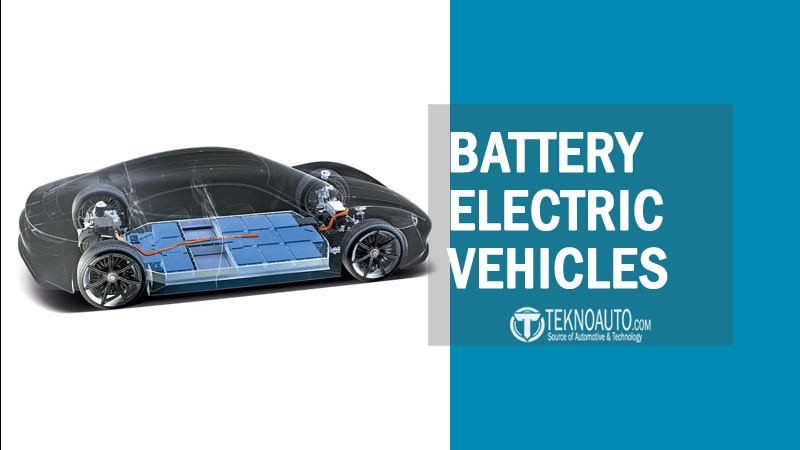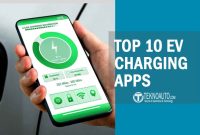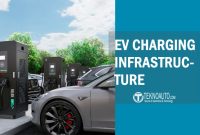Battery Electric Vehicles (BEVs) are no longer just futuristic concepts—they’re here, on the road, and rapidly becoming mainstream. As the world moves toward sustainable and cleaner transportation, BEVs stand out as a key technology in the shift away from fossil fuels. Whether you’re a tech enthusiast, an eco-conscious consumer, or simply curious about electric cars, understanding what BEVs are and how they fit into the automotive landscape is essential in 2025 and beyond.
In recent years, governments, automakers, and consumers have all shown increasing commitment to decarbonizing transportation. Global electric vehicle (EV) sales surpassed 10 million units in 2023, with BEVs accounting for the majority. This shift isn’t just driven by environmental concern—it’s also supported by rapid technological advancements, lower operating costs, and improved infrastructure.
Despite their growing popularity, BEVs remain misunderstood by many. Questions about how they work, whether they’re better than hybrids, how much they cost, or how far they can go on a single charge are common. That’s where this guide comes in.
What Is a BEV and How Does It Work?
A Battery Electric Vehicle (BEV) is a Types of Electric Vehicles that runs entirely on electricity, with no internal combustion engine (ICE) or fuel tank involved. Unlike hybrids or plug-in hybrids, BEVs rely solely on a rechargeable battery to power an electric motor, making them zero-emission at the tailpipe and highly efficient in converting stored energy into motion.
Core Components of a BEV
To understand how BEVs work, it’s important to get familiar with their key components:
- Battery Pack: The heart of a BEV. It stores electrical energy, usually in lithium-ion cells, which power the motor.
- Electric Motor: Converts electricity from the battery into mechanical energy that drives the wheels. It provides instant torque, making acceleration smooth and responsive.
- Inverter: Converts direct current (DC) from the battery into alternating current (AC) for the motor (or vice versa during regenerative braking).
- Onboard Charger: Manages the flow of electricity during charging.
- Regenerative Braking System: Recaptures energy lost during braking and sends it back to the battery, improving efficiency.
How a BEV Works
The process is simpler than most people expect:
- Energy stored in the battery flows through the inverter.
- The inverter delivers controlled electric current to the motor based on driver input (acceleration, braking, etc.).
- The motor turns the wheels, propelling the car forward.
- When the driver brakes or coasts, regenerative braking kicks in, slowing the car while recharging the battery.
This system is remarkably efficient—BEVs typically convert over 85% of the electrical energy from the battery into movement, compared to only about 20–30% efficiency in traditional gasoline engines.
Simplicity Means Less Maintenance
Because BEVs don’t have:
- Oil filters,
- Spark plugs,
- Exhaust systems,
- Complex transmission mechanisms,
They typically require less maintenance and fewer repairs than traditional cars, making them appealing from both an economic and convenience perspective.
Quiet and Smooth Operation
With no combustion noise or gear shifting, BEVs offer a whisper-quiet driving experience. This contributes to better comfort, especially in urban environments.
BEV vs HEV vs PHEV vs FCEV

Understanding the differences between BEVs, HEVs, PHEVs, and FCEVs is crucial for consumers considering the switch to electric mobility. Each vehicle type offers distinct technologies, fuel dependencies, environmental impacts, and ownership experiences.
BEV – Battery Electric Vehicle
A Battery Electric Vehicle (BEV) runs solely on electricity stored in an onboard battery. It has no gasoline engine, no exhaust pipe, and zero tailpipe emissions. These vehicles are powered entirely by one or more electric motors and require external charging via a home charger or public charging station.
- Power source: Rechargeable battery pack
- Charging method: Plugged into an electrical outlet or EV charger
- Driving range: Typically 150–400 miles depending on battery size
- Examples: Tesla Model 3, Nissan Leaf, Chevrolet Bolt
BEVs are ideal for drivers with regular access to charging infrastructure and those who want a fully emission-free driving experience.
HEV – Hybrid Electric Vehicle
A Hybrid Electric Vehicle (HEV) combines a traditional internal combustion engine (ICE) with an electric motor. However, unlike PHEVs, HEVs cannot be plugged in. Instead, the battery is charged through regenerative braking and the gasoline engine itself.
- Power source: Gasoline + small electric battery
- Charging method: Self-charging via engine and brakes
- Driving range: Similar to regular gasoline vehicles
- Examples: Toyota Prius (non-plug-in), Honda Insight
HEVs are often more fuel-efficient than conventional cars and are ideal for urban drivers looking for better mileage without changing their fueling habits.
PHEV – Plug-in Hybrid Electric Vehicle
A Plug-in Hybrid Electric Vehicle (PHEV) is a middle ground between BEVs and HEVs. It has both a gasoline engine and a larger rechargeable battery that can be charged via a plug. The vehicle can operate in electric-only mode for short distances before switching to hybrid operation.
- Power source: Battery + gasoline engine
- Charging method: External charging plus gasoline
- Electric-only range: Typically 20–50 miles
- Examples: Toyota Prius Prime, Ford Escape PHEV, Hyundai Ioniq Plug-in
PHEVs are suitable for drivers who want the flexibility of electric driving for short trips and gas-powered range for longer distances.
FCEV – Fuel Cell Electric Vehicle
A Fuel Cell Electric Vehicle (FCEV) uses hydrogen gas to generate electricity onboard via a fuel cell. These vehicles emit only water vapor and can be refueled in minutes, similar to a gasoline vehicle.
- Power source: Hydrogen fuel cell
- Charging method: Hydrogen refueling station
- Driving range: 300–400 miles
- Examples: Toyota Mirai, Hyundai Nexo, Honda Clarity Fuel Cell
While promising, FCEVs are currently limited by the availability of hydrogen infrastructure, which makes them more viable in specific regions.
Side-by-Side Comparison Table
| Feature | BEV | HEV | PHEV | FCEV |
|---|---|---|---|---|
| Power Source | Battery only | Gasoline + battery | Plug-in battery + gasoline | Hydrogen fuel cell |
| Emissions | Zero | Low | Low to zero (in EV mode) | Zero (only water vapor) |
| Charging | Plug-in only | No plug, self-charging | Plug-in + gas | Hydrogen refueling |
| Electric Range | 150–400 miles | Very limited (not primary) | 20–50 miles (EV mode) | 300–400 miles |
| Refueling Time | Hours (depending on charger) | N/A | 2–4 hours (EV) + gas refill | ~5 minutes |
| Ideal Use Case | Emission-free daily driving | Fuel-efficient city driving | Short trips + long range | Fast refueling, long-distance EV |
| Popular Models | Tesla Model 3, Leaf | Toyota Prius, Honda Insight | Prius Prime, Escape PHEV | Toyota Mirai, Hyundai Nexo |
Benefits of BEVs
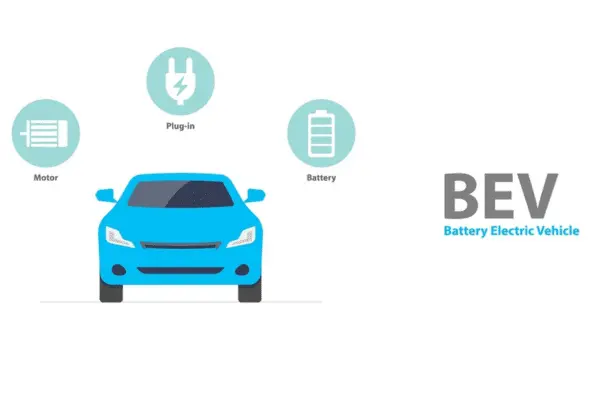
Battery Electric Vehicles (BEVs) offer a wide range of benefits that go beyond just being environmentally friendly. For many, the shift to BEVs represents not just a commitment to cleaner transportation, but also a practical decision that aligns with technological convenience and long-term cost savings. Here are the main advantages of owning a BEV:
Environmentally Friendly and Zero Emissions
One of the most compelling reasons to choose a BEV is its environmental impact—or rather, the lack of it. BEVs produce zero tailpipe emissions, meaning they don’t release CO₂, nitrogen oxides, or particulate matter while driving. This makes them a powerful tool in the fight against climate change and urban air pollution. When powered by renewable energy sources, the carbon footprint of a BEV is significantly lower than that of an internal combustion engine (ICE) vehicle over its lifetime.
Lower Operating Costs
Although BEVs may have a higher upfront cost compared to ICE vehicles, they make up for it in operating costs. Electricity is much cheaper per mile than gasoline or diesel, and the efficiency of electric motors reduces overall energy consumption. In addition, BEVs have fewer moving parts, which translates to fewer mechanical issues and lower maintenance costs over time. No oil changes, no exhaust system repairs, no timing belts—it all adds up to significant savings.
High Performance and Instant Torque
BEVs are often praised for their smooth and responsive acceleration. Unlike ICE engines that require gear shifts and RPM build-up, electric motors deliver instant torque. This gives BEVs a quick, quiet, and seamless driving experience. Some BEVs outperform even high-performance gasoline cars in acceleration tests, thanks to the linear power delivery of electric drivetrains.
Quiet and Comfortable Ride
Without an engine rumbling under the hood, BEVs offer a quiet cabin experience. This reduction in noise pollution makes for a more pleasant drive, especially in urban settings. For long-distance travel or daily commuting, this contributes to a more relaxed and less fatiguing driving environment.
Government Incentives and Tax Benefits
Many governments offer incentives, subsidies, and tax breaks to encourage the adoption of BEVs. These can include rebates on the purchase price, exemptions from road taxes, access to carpool lanes, and free parking in certain areas. These benefits not only lower the effective cost of a BEV but also make ownership more convenient.
Home Charging Convenience
BEV owners enjoy the ability to charge their vehicles at home overnight, much like charging a smartphone. This eliminates the need for gas station visits and allows for a full battery each morning. Combined with smart charging systems, homeowners can schedule charging during off-peak hours to save even more on electricity bills.
Future-Proof Investment
As cities and countries move toward banning or restricting ICE vehicles, owning a BEV positions you on the right side of future regulations. Automakers are investing heavily in electrification, meaning infrastructure, support, and resale value for BEVs are only expected to grow in the coming years.
Challenges and Limitations of BEVs
While Battery Electric Vehicles (BEVs) offer numerous advantages, they also come with certain challenges that are important to consider before making the switch. These limitations vary depending on location, usage habits, and available infrastructure.
Range Anxiety and Limited Driving Range
One of the most cited concerns among potential BEV buyers is EV range anxiety—the fear of running out of battery before reaching a charging station. Although modern BEVs offer ranges between 150 to 400 miles (240 to 640 km), this can still be limiting for drivers accustomed to the convenience of refueling gasoline vehicles quickly and almost anywhere. Range also depends on driving style, terrain, and weather conditions, with cold temperatures significantly reducing battery efficiency.
Charging Infrastructure Gaps
While charging networks are expanding rapidly in many parts of the world, some regions—particularly rural or developing areas—still lack reliable public charging infrastructure. This can make long-distance travel or daily use less convenient for those without access to home charging. In apartment complexes or shared housing, installing private chargers can also be a significant hurdle.
Charging Time
Even with fast-charging options available, charging a BEV takes longer than refueling a conventional vehicle. Level 1 charging (standard home outlet) can take over 24 hours for a full charge, while Level 2 (home or public) typically takes 4–8 hours. DC fast chargers can replenish 80% of the battery in 30–45 minutes, but they’re not yet universally available and may degrade battery life if used frequently.
Higher Initial Cost
Although BEV prices are declining, they still tend to have higher upfront costs than comparable internal combustion engine vehicles. This is primarily due to the cost of the lithium-ion battery. Government incentives help offset the difference in some countries, but in regions where such support is limited, the price gap can be a barrier to adoption.
Battery Degradation Over Time
Batteries naturally lose capacity over time. After several years of use, a BEV may no longer deliver the same driving range as it did when new. Most manufacturers offer warranties for 8–10 years or a set mileage, but the prospect of costly battery replacement still worries some potential buyers, especially in the second-hand market.
Limited Model Variety in Some Markets
While the global selection of BEVs is growing, certain markets still have limited model availability, especially in specific segments like pickup trucks or commercial vehicles. Consumers looking for very affordable or highly specialized vehicles may find their options constrained compared to the traditional car market.
Cold Weather Performance
Batteries are sensitive to extreme temperatures, especially cold. In low temperatures, the chemical reactions inside lithium-ion cells slow down, reducing both range and charging speed. In some cases, BEVs can lose up to 30% of their effective range during winter. Though many modern BEVs now include battery preconditioning systems, the performance drop is still noticeable.
BEV Charging: How, Where, and How Long?
One of the most critical aspects of owning a Battery Electric Vehicle (BEV) is understanding how and where to charge it, as well as how long it takes. Charging infrastructure has grown rapidly in recent years, but the experience still differs significantly from traditional refueling.
Types of Charging Levels
There are three main types of BEV charging, each with its own speed, convenience, and use cases:
Level 1 EV Charging (Standard Home Outlet)
- Uses a regular 120V household outlet
- Adds approximately 3–5 miles (5–8 km) of range per hour
- Ideal for overnight charging in low-use scenarios
- Charging a fully depleted battery can take 24 hours or more
Level 2 EV Charging (240V Home or Public Charger)
- Requires a dedicated charger (installed at home or found in public stations)
- Adds 20–60 miles (32–96 km) of range per hour
- A full charge typically takes 4–8 hours
- Most practical for daily charging at home or during extended parking
Level 3 EV DC Fast Charging (Public High-Speed Stations)
- Uses direct current at high voltage (400V+ systems)
- Adds up to 80% charge in 30–45 minutes, depending on the vehicle and battery size
- Suitable for long-distance travel or quick top-ups
- Not ideal for daily use due to battery stress and long-term degradation concerns
Where to Charge
At Home
The most convenient and cost-effective way to charge is at home, especially overnight. Home charging allows BEV owners to start each day with a full battery. Smart chargers can be scheduled to operate during off-peak hours, saving on electricity costs.
At Work
Many employers now offer Level 2 charging stations in office parking lots. This supports commuting needs and extends total daily range without relying on public stations.
Public Charging Stations
Available in urban centers, shopping malls, restaurants, and highways, public chargers—especially fast-charging stations—are essential for users without home access or during long trips. Apps like PlugShare, ChargePoint, and Electrify America help locate available stations in real time.
How Long Does Charging Take?
Charging time depends on multiple factors:
- Battery capacity (kWh)
- State of charge at the time of plug-in
- Charger power level (kW)
- Vehicle’s onboard charging capability
- Temperature conditions (charging is slower in cold weather)
For example, a BEV with a 60 kWh battery:
- Level 1: up to 24–30 hours
- Level 2: approximately 6–8 hours
- DC Fast Charging: 30–45 minutes to reach 80%
Smart Charging and Vehicle-to-Grid (V2G) Potential
Modern BEVs and chargers support smart charging, allowing users to optimize charging based on utility rates and grid demand. Additionally, Vehicle-to-Grid (V2G) technologies are emerging, allowing BEVs to discharge energy back into the grid during peak demand, turning your car into a mobile battery resource.
Charging Costs
Charging costs vary depending on location, time of day, and electricity provider. On average:
- Home charging: $0.10–$0.20 per kWh (U.S.)
- Public charging: $0.25–$0.50 per kWh or per minute
- DC Fast charging: Premium-priced, sometimes $0.60+ per kWh
Even at higher rates, charging remains significantly cheaper than fueling a gasoline car on a per-mile basis.
BEV Battery Technology and Lifespan

The battery is the core component of every Battery Electric Vehicle (BEV), playing a pivotal role in its range, performance, cost, and long-term value. Understanding how BEV batteries work, how long they last, and what technology powers them is essential for any prospective EV owner.
Types of BEV Batteries
Most BEVs today use lithium-ion (Li-ion) batteries, the same technology found in smartphones and laptops but on a much larger scale. These batteries are favored for their high energy density, relatively light weight, and rechargeability.
Key types of lithium-ion batteries used in BEVs include:
- Nickel Manganese Cobalt (NMC): Balanced performance, widely used in consumer EVs (e.g., Tesla, Hyundai)
- Lithium Iron Phosphate (LFP): Longer lifespan, cheaper, and safer, though with lower energy density (common in Chinese EVs and Tesla base models)
- Nickel Cobalt Aluminum (NCA): High energy density, typically found in performance-oriented BEVs
Emerging technologies include solid-state batteries, which promise greater safety, faster charging, and higher capacity but are still in development for mass-market use.
Battery Capacity and Range
Battery capacity is measured in kilowatt-hours (kWh), indicating how much energy the pack can store. A higher capacity generally means longer range, though efficiency also plays a role. For example:
- 40–50 kWh: ~150–200 miles (240–320 km)
- 60–80 kWh: ~250–300 miles (400–480 km)
- 100+ kWh: Up to 400+ miles (640+ km)
Improvements in software, aerodynamics, and motor efficiency also help extend usable range beyond what raw battery size alone would allow.
Battery Lifespan
Modern BEV batteries are designed to last at least 8–10 years or 100,000–200,000 miles, depending on usage and environmental conditions. Most manufacturers offer warranties that guarantee battery health over this period—often covering a minimum of 70% capacity retention.
Factors that affect battery lifespan:
- Frequent fast charging: Can slightly accelerate degradation
- High ambient temperatures: Heat can reduce battery longevity
- Deep discharges and overcharging: Stress the battery chemistry
- Driving habits: Aggressive acceleration and braking can increase wear
Despite common concerns, real-world data shows many BEVs maintain strong battery performance well beyond warranty periods, especially those with effective thermal management systems.
Battery Degradation Over Time
All lithium-ion batteries gradually degrade over time, losing a small portion of capacity annually. On average:
- After 1 year: ~2–3% degradation
- After 5 years: ~10–15%
- After 10 years: ~20–30%
This does not make the vehicle unusable but may reduce range noticeably. Owners may compensate with more frequent charging or by replacing the pack in the long term.
Battery Replacement Costs
Replacing a BEV battery can be expensive, typically ranging from $4,000 to $15,000, depending on vehicle model and battery size. However, costs are falling year by year, and many EVs are designed with modular battery packs to allow partial replacements or refurbishment.
Battery-as-a-service (BaaS) models are also emerging, where consumers lease batteries separately or swap them at specialized stations, potentially reducing ownership costs and concerns.
Second-Life Use and Recycling
As BEV batteries age out of automotive use, they can still serve in stationary energy storage for homes, buildings, or the electrical grid. This second life helps extend the battery’s usefulness before final recycling. Meanwhile, global efforts are ramping up to recover valuable materials like lithium, cobalt, and nickel from used batteries, reducing the need for new mining and enhancing sustainability.
Cost of Ownership: Is BEV Worth It?
When evaluating whether a Battery Electric Vehicle (BEV) is a smart investment, many people focus solely on the sticker price. However, true affordability comes from the total cost of ownership (TCO)—including fuel, maintenance, insurance, depreciation, and resale value. In this regard, BEVs often outperform traditional internal combustion engine (ICE) vehicles over the long term.
Upfront Purchase Price
BEVs typically have a higher purchase price than ICE vehicles in the same class. This is mainly due to the cost of the battery pack, which remains the most expensive component of the vehicle. However, the price gap is narrowing as battery costs decline and economies of scale improve.
In many countries, buyers receive:
- Federal tax credits or rebates
- State and local incentives
- Exemptions from road taxes or registration fees
- Grants for installing home chargers
When factored in, these incentives can make BEVs competitively priced—or even cheaper—than their gasoline counterparts.
Fuel and Energy Costs
BEVs are considerably cheaper to “fuel.” The average cost of electricity per mile is less than half that of gasoline:
- Electricity: ~$0.03–$0.06 per mile (depending on rates and efficiency)
- Gasoline: ~$0.10–$0.15 per mile
Charging at home during off-peak hours can lead to further savings. Some utility companies offer EV-specific plans to encourage nighttime charging, reducing energy bills even more.
Maintenance and Repairs
Without an engine, transmission, or exhaust system, BEVs have fewer moving parts and require much less routine maintenance. Key cost advantages include:
- No oil changes
- No spark plugs or fuel filters
- Less brake wear (thanks to regenerative braking)
- Fewer fluids to replace
According to industry studies, BEV maintenance costs can be 30–50% lower than ICE vehicles over their lifespan.
Insurance Costs
Insurance for BEVs can be slightly higher due to the higher initial value and repair costs—especially for battery-related damages or specialized parts. However, rates are becoming more competitive as insurers gather more long-term data and as BEVs become mainstream.
Drivers can often reduce insurance costs by:
- Installing anti-theft devices
- Bundling with home insurance
- Opting for usage-based or EV-specific policies
Depreciation and Resale Value
Depreciation was once a major concern for BEVs, especially for early models with limited range or outdated battery tech. Today, resale values are stabilizing as public confidence increases and demand rises for used EVs.
Factors that improve BEV resale value include:
- High battery health (verified via diagnostics)
- Updated software and features
- Long remaining warranty
- Brand reputation (e.g., Tesla and Hyundai tend to retain value better)
Some studies suggest BEVs can now match or even exceed ICE resale values—particularly when fuel prices are high or emission regulations tighten.
Total Cost of Ownership (TCO): A Quick Comparison
Let’s consider a typical compact BEV vs a comparable gasoline car over five years:
| Cost Category | BEV (5-Year Est.) | ICE (5-Year Est.) |
|---|---|---|
| Purchase Price (net) | $35,000 | $30,000 |
| Fuel/Energy | $2,000 | $7,500 |
| Maintenance | $1,500 | $3,500 |
| Insurance | $5,500 | $5,000 |
| Depreciation | $8,000 | $10,000 |
| Total | $52,000 | $56,000 |
This simplified scenario shows how a BEV can be more affordable in the long run, even if the purchase price is higher up front.
BEV Models in 2025: What to Expect
The year 2025 is shaping up to be a landmark for Battery Electric Vehicles (BEVs). Automakers across the globe are accelerating their electrification strategies, with dozens of new models expected to hit the market. These upcoming BEVs promise improvements in range, design, performance, and affordability, making electric mobility more accessible than ever before.
Key Trends Driving BEV Development in 2025
Several forces are shaping the BEV landscape in 2025:
- Stricter emissions regulations across Europe, North America, and parts of Asia
- Increased battery production capacity, lowering costs and improving supply chains
- Solid-state and LFP battery advancements offering better performance and durability
- Consumer demand for cleaner, smarter vehicles with high-tech features
- Expanding charging networks, reducing range anxiety and enabling long-distance travel
Upcoming BEV Models in 2025: What to Watch
As electric mobility moves into the mainstream, 2025 is expected to be a pivotal year for Battery Electric Vehicles (BEVs). Automakers across the globe are rolling out an impressive array of models that cater to diverse markets—from budget-conscious urban commuters to high-performance SUV enthusiasts.
These upcoming vehicles not only reflect the maturity of BEV platforms but also the evolving needs of consumers demanding practicality, sustainability, and advanced technology in a single package.
1. Tesla Model 2 (Compact EV)

Tesla, a pioneer in the EV revolution, is poised to enter the affordable mass-market segment with the much-anticipated Model 2, informally dubbed the “Tesla Hatchback.” This compact BEV is rumored to be priced under $30,000, making it one of the most affordable offerings from the brand.
With this model, Tesla is strategically targeting urban drivers and first-time EV buyers, particularly in dense cities where smaller vehicles are more practical. The Model 2 is expected to inherit core Tesla strengths—minimalist design, software-driven performance, and access to the Supercharger network—while streamlining hardware to keep costs low.
Although official specs remain under wraps, expectations include a range of 250–300 miles, standard autopilot capability, and a compact form factor ideal for urban maneuverability. This model could become a game-changer, opening Tesla ownership to a broader demographic and putting pressure on traditional automakers in the sub-$30k segment.
2. Volkswagen ID.7 and ID. Buzz

Volkswagen continues to expand its ID family, reflecting the brand’s aggressive shift away from combustion engines. The ID.7, a sleek electric sedan, brings a premium experience to the mid-size segment.
Designed for long-distance travel, it is expected to offer over 350 miles of range, a spacious interior, and Volkswagen’s latest ADAS (Advanced Driver Assistance Systems). Positioned as a global model, the ID.7 will compete with vehicles like the Tesla Model 3 and Hyundai IONIQ 6. Meanwhile, the ID. Buzz is perhaps VW’s most nostalgic yet modern release—a reimagining of the iconic Microbus.
It combines retro-inspired design with modern electric utility, targeting families, outdoor enthusiasts, and ride-sharing services. With three-row seating, smart connectivity, and flexible storage configurations, the ID. Buzz stands out in a sea of SUVs and crossovers, showing how BEVs can innovate in form as much as function.
3. Hyundai IONIQ 7 and Kia EV9

Hyundai and its sister brand Kia are asserting dominance in the large electric SUV category with the IONIQ 7 and EV9 respectively. Both vehicles are based on the versatile E-GMP platform, which supports ultra-fast charging (up to 350kW), bidirectional charging, and long range—over 300 miles per charge.
The IONIQ 7 is designed as a luxury family hauler, offering three-row seating, ambient interior lighting, and a lounge-like cabin with eco-friendly materials. Its boxy-yet-futuristic styling sets it apart, and Hyundai’s emphasis on in-car tech—including AI-based driver profiles and biometric start systems—makes it one of the most advanced BEVs coming to market. The Kia EV9 shares many components but leans into ruggedness and versatility, with features like off-road driving modes and a more squared-off SUV profile. These models show how South Korean automakers are not just keeping pace but actively defining the future of electric utility vehicles.
4. Ford Explorer EV (Europe)
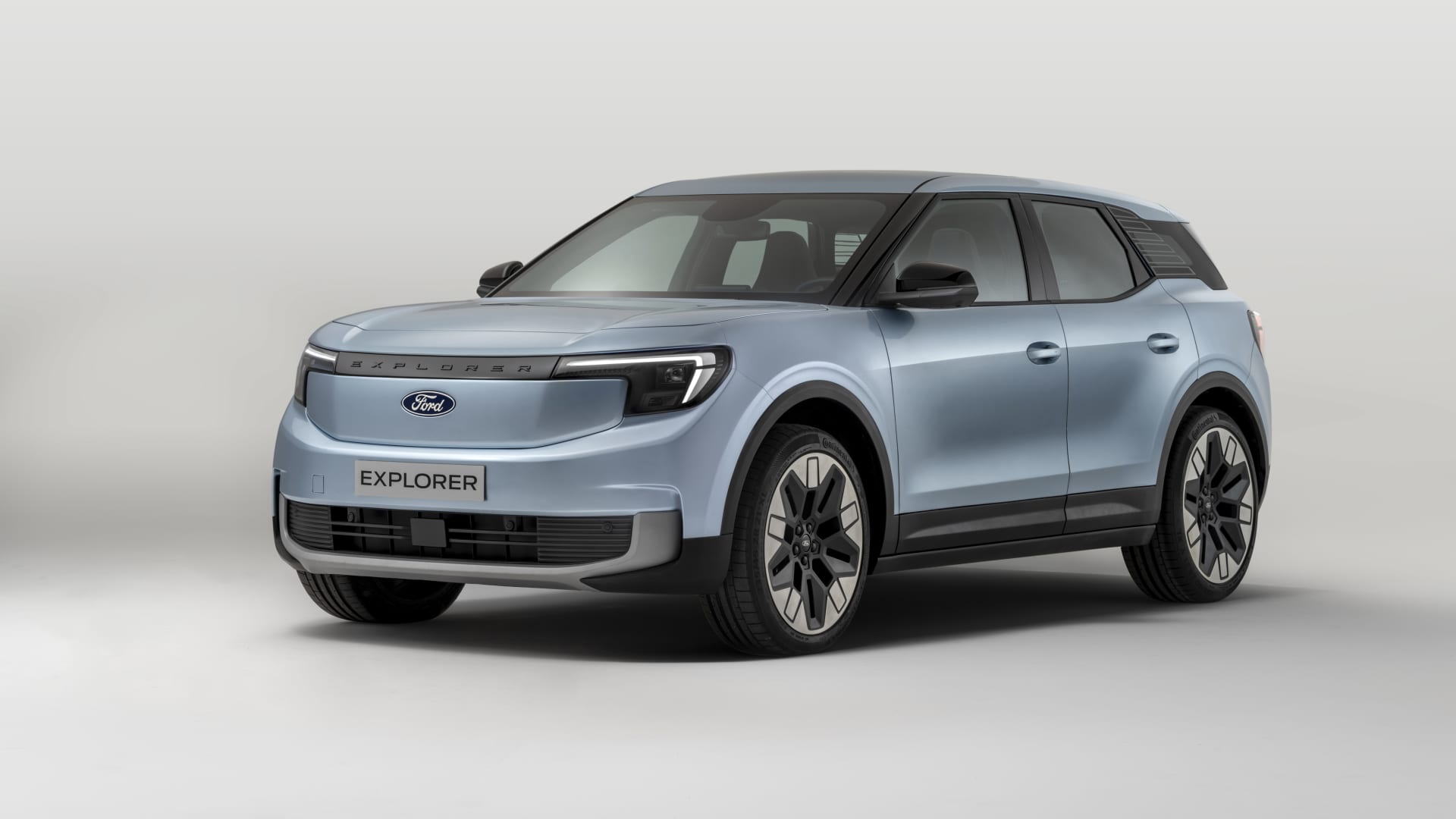
Ford is electrifying one of its most recognizable SUV nameplates for the European market—the Explorer EV. Designed in collaboration with Volkswagen (using the MEB platform), the new Explorer offers the size, styling, and comfort expected from a Ford, but with the efficiency of an EV Powertrain.
Aimed at urban families and professionals, the Explorer EV blends American SUV DNA with European practicality. The range is expected to exceed 250 miles, and it will feature an intuitive infotainment system, flexible seating, and advanced safety features.
By leveraging existing EV platforms and reimagining iconic models, Ford is signaling a strong commitment to global electrification—especially in regions where compact SUVs dominate.
5. BYD Seal and Dolphin
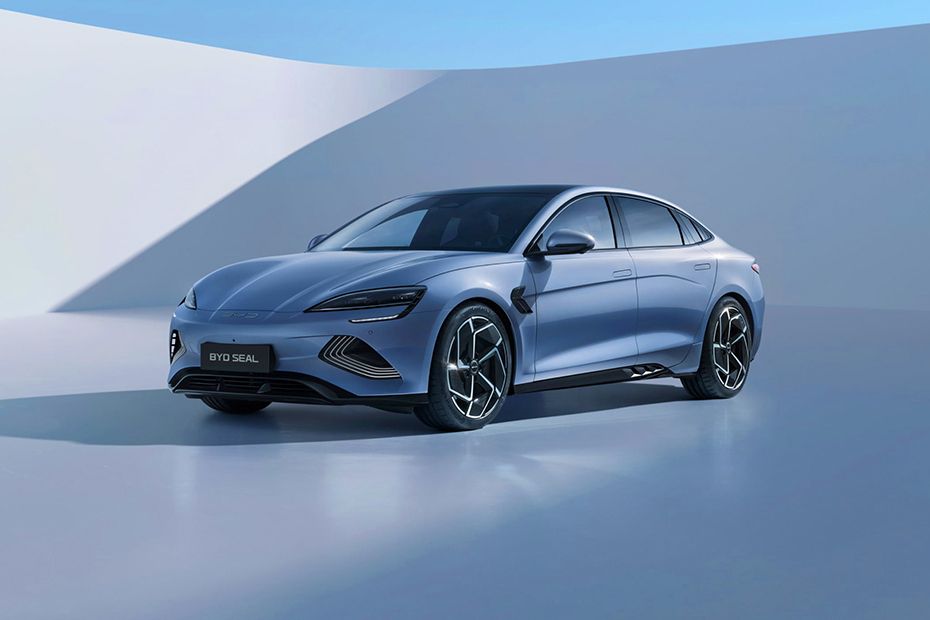
China’s BYD (Build Your Dreams) is making waves internationally with its value-packed, high-quality Electric Vehicles (EVs). The Seal, a mid-size sedan with sporty aesthetics and performance tuning, is expected to directly rival the Tesla Model 3.
Featuring BYD’s advanced Blade Battery technology—known for its safety and energy density—the Seal offers long range (up to 340 miles) and fast charging at an attractive price point.Meanwhile, the Dolphin, a compact hatchback, brings practicality and affordability to city driving.
Its playful design, efficient interior space, and modest range (up to 200 miles) make it a solid choice for new drivers and eco-conscious consumers alike. As BYD expands into Europe, Latin America, and Southeast Asia, these models could redefine what affordable electric mobility looks like, especially in markets underserved by Western automakers.
6. Rivian R2 Series
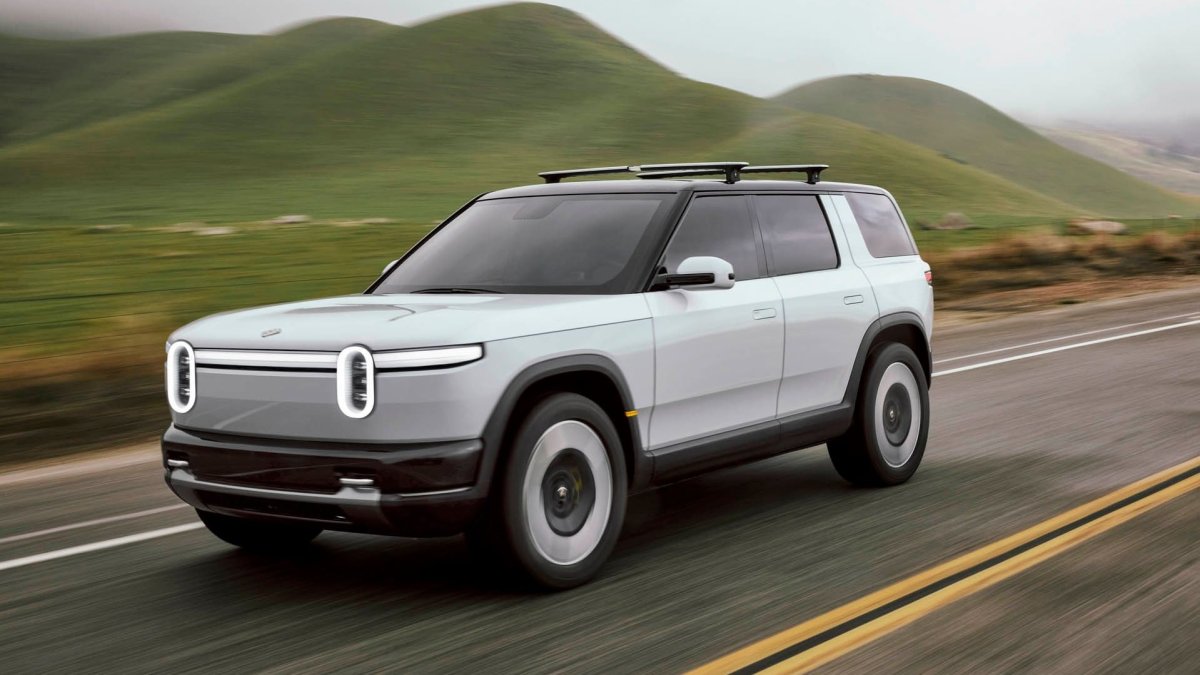
Following the success of its high-end adventure models (the R1T pickup and R1S SUV), U.S.-based Rivian is gearing up to introduce the R2 series—a smaller, more affordable line aimed at the mainstream market.
These vehicles will retain Rivian’s signature ruggedness and software-first experience but at a lower price point (likely between $40,000–$50,000).
The R2 SUV and crossover are expected to offer dual-motor AWD, semi-autonomous car driving features, and outdoor-focused accessories, appealing to environmentally conscious adventurers. Rivian’s reputation for build quality and innovation gives it a competitive edge in the lifestyle EV niche, and the R2 could broaden its appeal beyond early adopters and tech enthusiasts.
7. Volvo EX30 and Polestar 3

Swedish automaker Volvo continues to blend Scandinavian design and sustainability in its EV lineup. The EX30, a small electric SUV, is designed for urban dwellers who want premium quality at an entry-level price.
With sustainable materials, a compact footprint, and strong safety credentials, it may become one of the best-selling Volvos in Europe. On the performance side, Volvo’s offshoot brand Polestar introduces the Polestar 3, a high-performance electric SUV that competes with the likes of the Audi e-tron and BMW iX.
Combining dual-motor all-wheel drive with over 500 horsepower, the Polestar 3 offers a blend of luxury, speed, and green technology. Both vehicles underline Volvo Group’s ambitious climate goals—aiming to go fully electric by 2030.
Segment Highlights: What’s Popular in 2025
- Compact city EVs are gaining ground due to urbanization and rising fuel costs.
- Electric SUVs and crossovers dominate new releases, offering practicality without sacrificing range.
- Luxury BEVs continue to lead in innovation, with brands like Mercedes-Benz (EQ series), BMW (i series), and Audi (e-tron) integrating AI, smart interiors, and ultra-fast charging.
Performance and Range Expectations
Thanks to battery improvements and aerodynamic designs, many 2025 BEVs are expected to offer:
- Range between 250 to 500 miles (400–800 km)
- 0–60 mph acceleration in under 6 seconds (in many non-performance models)
- 800V charging architecture allowing ultra-fast charging (10–80% in ~20 minutes)
Technology Features to Look For
BEVs in 2025 will commonly include:
- Advanced Driver Assistance Systems (ADAS)
- Over-the-air (OTA) updates
- Integrated infotainment with AI assistants
- Smartphone-key access and remote diagnostics
- Bidirectional charging (vehicle-to-home or grid)
Comparison Table of Upcoming BEVs in 2025
| Model | Type / Segment | Est. Price (USD) | Est. Range (miles) | Charging Speed | Seating | Key Features |
|---|---|---|---|---|---|---|
| Tesla Model 2 | Compact hatchback | <$30,000 | 250–300 | Fast charging via Supercharger | 5 | Budget Tesla, urban design, compact size, Autopilot features |
| VW ID.7 | Mid-size electric sedan | ~$50,000 | 350+ | DC fast charging (200 kW+) | 5 | Long range, spacious interior, VW ADAS tech |
| VW ID. Buzz | Electric minivan | ~$60,000 | 260–300 | ~170 kW fast charging | 5–7 | Retro-modern design, lifestyle/family focus, flexible cargo |
| Hyundai IONIQ 7 | Full-size SUV | ~$65,000 | 300+ | 800V (350 kW fast charging) | 6–7 | Lounge interior, advanced tech, three-row seating |
| Kia EV9 | Full-size SUV | ~$55,000–$70,000 | 300–330 | 800V platform | 6–7 | Rugged design, off-road features, family-friendly |
| Ford Explorer EV | Midsize SUV (Europe) | ~$50,000 | 250–280 | ~170 kW (MEB platform) | 5 | Practical for families, Ford reliability, European design |
| BYD Seal | Sporty sedan | ~$35,000–$40,000 | 300–340 | ~150 kW (Blade Battery) | 5 | Sporty design, affordable Tesla rival, strong build quality |
| BYD Dolphin | Compact hatchback | ~$20,000–$25,000 | 180–210 | ~100 kW | 4–5 | Urban-focused, highly affordable, good interior for the price |
| Rivian R2 Series | Compact SUV/Crossover | ~$40,000–$50,000 | 280–320 | TBD (likely fast charging) | 5 | Adventure-ready, rugged build, dual motor AWD |
| Volvo EX30 | Compact SUV | ~$35,000 | 250–275 | DC fast charging (150+ kW) | 5 | Sustainable interior, urban luxury, Volvo safety features |
| Polestar 3 | Performance SUV | ~$80,000+ | 300–320 | 250 kW (approx.) | 5 | Dual motor, Scandinavian design, high performance and tech |
Notes:
- Prices and ranges are estimated, based on public disclosures and leaks as of mid-2025.
- Charging speeds depend on infrastructure and vary slightly by region.
- All models are expected to support over-the-air updates, regenerative braking, and mobile app connectivity.
Environmental Impact and Sustainability
Battery Electric Vehicles (BEVs) are widely promoted as environmentally friendly alternatives to internal combustion engine (ICE) vehicles. While it’s true that BEVs have a significantly lower environmental footprint during their operational phase, a complete sustainability assessment must consider their full lifecycle—from raw material extraction to end-of-life recycling.
Emissions Over the Vehicle Lifecycle
BEVs produce zero tailpipe emissions, which is their most immediate environmental benefit. This results in cleaner urban air and reduced health risks associated with particulate matter and nitrogen oxides.
However, it’s important to examine lifecycle emissions, which include:
- Manufacturing (especially battery production)
- Electricity generation for charging
- Vehicle disposal and recycling
Studies show that even when accounting for emissions from battery manufacturing and electricity use, BEVs still produce 30–60% fewer total CO₂ emissions over their lifetime compared to ICE vehicles. The cleaner the grid, the greater the advantage.
Battery Production and Resource Extraction
BEV batteries require raw materials like lithium, cobalt, nickel, and manganese. Mining these materials raises concerns about:
- Environmental degradation
- Water consumption
- Labor rights and ethical sourcing (particularly cobalt)
To address this, many automakers and battery suppliers are:
- Investing in responsible sourcing initiatives
- Reducing cobalt content or moving to LFP batteries
- Developing closed-loop recycling systems to recover valuable minerals
Sustainable Manufacturing Practices
Leading EV manufacturers are integrating sustainability into production through:
- Renewable energy use in factories
- Water recycling
- Low-carbon steel and aluminum sourcing
- Carbon offset programs
Companies like Tesla, Volkswagen, and BMW are increasingly transparent about their supply chains and carbon accounting, aligning with ESG (Environmental, Social, and Governance) goals.
Impact on the Electrical Grid
As BEV adoption grows, concerns arise about the additional load on national power grids. However, studies suggest that if managed properly, BEVs can:
- Balance grid demand through smart charging during off-peak hours
- Serve as mobile storage with vehicle-to-grid (V2G) integration
- Encourage grid decarbonization, as higher electricity demand incentivizes renewable energy investment
Many governments are already updating infrastructure to support widespread EV integration without compromising grid stability.
Battery Recycling and Second-Life Applications
End-of-life battery management is critical to BEV sustainability. Fortunately, lithium-ion batteries retain up to 80% of their capacity after automotive use, making them ideal for:
- Home energy storage
- Commercial backup systems
- Grid-level renewable energy balancing
Recycling technologies can now recover over 90% of key battery materials, reducing the need for fresh mining and minimizing environmental harm. Companies like Redwood Materials, Li-Cycle, and CATL are leading efforts in this area.
Comparing BEVs and ICE Vehicles: Environmental Impact
| Environmental Factor | BEV | ICE Vehicle |
|---|---|---|
| Tailpipe Emissions | None | High CO₂, NOx, PM emissions |
| Energy Source | Electricity (renewable/gird) | Fossil fuels |
| Resource Extraction | Lithium, cobalt, nickel | Oil extraction and refining |
| Lifecycle CO₂ Emissions | 30–60% lower than ICE | High |
| Noise Pollution | Very low | High |
Long-Term Sustainability Outlook
BEVs are part of a broader transition toward a circular and decarbonized economy. With cleaner production methods, ethical sourcing, and effective battery management, they have the potential to become one of the most sustainable transportation options in human history.
That said, continued innovation and regulation are necessary to ensure that the shift to BEVs doesn’t simply replace one environmental problem with another. Stakeholders across the value chain—governments, manufacturers, energy providers, and consumers—must work together to maximize the environmental benefits of BEVs.
Government Policies and Incentives
Government policies have played a crucial role in accelerating the adoption of Battery Electric Vehicles (BEVs) worldwide. From purchase subsidies to infrastructure investments, these policies not only make BEVs more affordable but also support the ecosystem needed for widespread electrification. As we move through 2025, policy support continues to evolve, aiming to drive mass-market adoption and reduce transport-sector emissions.
Purchase Incentives and Tax Credits
Many governments offer financial incentives to reduce the upfront cost of BEVs and make them competitive with traditional internal combustion engine (ICE) vehicles. These incentives include:
- Federal tax credits (e.g., up to $7,500 in the U.S.)
- Cash rebates or grants at the point of sale
- Exemption from value-added tax (VAT) or sales tax
- Reduced vehicle registration fees
- Discounts on import duties for EVs in emerging markets
Some programs are income-restricted or tiered based on battery size or vehicle type, but they significantly influence consumer decisions.
Incentives for Charging Infrastructure
To overcome one of the biggest hurdles to BEV adoption—charging availability—governments are investing heavily in public infrastructure. Policies include:
- Grants for installing home or workplace chargers
- Funding for highway and city charging networks
- Support for fast-charging corridors in rural areas
- Mandates for charging stations in new buildings
In countries like Norway and the Netherlands, a dense and reliable public charging network has been key to BEV success.
Non-Monetary Benefits
In addition to financial incentives, many regions offer non-monetary perks to BEV owners, such as:
- Access to HOV (high-occupancy vehicle) or carpool lanes, even when driving alone
- Free or discounted tolls
- Exemptions from congestion charges (e.g., London, Singapore)
- Free parking in designated EV zones
- Priority lanes or preferred access in low-emission zones
These benefits are particularly appealing to urban dwellers and daily commuters.
Regulatory Mandates and Emission Targets
Beyond incentives, governments are setting clear timelines to phase out fossil-fuel-powered vehicles:
- European Union: Ban on new ICE sales by 2035
- United Kingdom: No new petrol/diesel vehicles sold after 2030
- California: Zero-emission vehicle (ZEV) mandate ramping to 100% by 2035
- China: NEV (New Energy Vehicle) credits required for automakers
These mandates push automakers to invest in BEV R&D and adjust their portfolios accordingly.
Government Fleet Electrification
Many countries are leading by example by electrifying government and public fleets, including:
- Buses and public transportation vehicles
- Postal and municipal service vehicles
- Police and emergency fleets
- Military pilot programs for electrified logistics
Fleet purchases also help scale production and reduce BEV prices through volume manufacturing.
International Examples of Strong EV Policies
- Norway: Over 80% of new car sales are electric, thanks to aggressive tax relief, road toll exemptions, and free public charging.
- China: Offers substantial purchase subsidies, battery swapping pilots, and prioritizes EV production in national policy.
- Germany: Provides high purchase subsidies and invests in expanding charging networks, including autobahn fast-chargers.
- United States: The Inflation Reduction Act (IRA) includes tax incentives tied to battery sourcing and North American assembly.
Future Policy Outlook
As BEVs become mainstream, some incentives will phase out or evolve into penalties for polluting vehicles, such as:
- CO₂-based vehicle taxes
- Urban ICE driving bans
- Road pricing based on emissions
Simultaneously, support may shift toward:
- Used EV incentives
- Battery recycling programs
- Incentives for domestic battery production and critical minerals
Governments play a pivotal role not only in removing adoption barriers but also in guiding the auto industry toward sustainability and energy independence.
Conclusion: Is a BEV Right for You in 2025?
Battery Electric Vehicles (BEVs) have evolved rapidly in the past decade—from niche innovations to mainstream mobility solutions. In 2025, the case for going electric is stronger than ever, supported by advances in battery technology, improved infrastructure, compelling government policies, and rising consumer demand for sustainable transportation.
If you’re evaluating whether a BEV is the right choice for you, consider the following:
Why You Should Consider a BEV
- Environmental Responsibility: BEVs produce zero tailpipe emissions and contribute significantly less to climate change over their lifecycle compared to ICE vehicles.
- Cost Savings: While initial purchase prices can still be high, lower energy and maintenance costs often make BEVs cheaper in the long run.
- Driving Experience: Instant torque, smooth acceleration, and near-silent operation deliver a driving feel that’s hard to match.
- Access to Incentives: Depending on where you live, government subsidies, tax breaks, and other benefits can make BEV ownership more affordable and convenient.
- Future-Readiness: As cities impose emission restrictions and ICE bans approach, owning a BEV ensures compliance with future regulations and better resale value.
When a BEV Might Not Be Ideal—Yet
- Limited Charging Access: If you live in a rural area, an apartment, or have no access to charging stations, charging a BEV could still be inconvenient.
- Frequent Long-Distance Travel: While fast-charging networks are expanding, those who frequently travel long distances in regions with sparse infrastructure may face challenges.
- Budget Constraints: In some markets, even with incentives, BEVs may still fall outside budget ranges—though this is rapidly changing as affordable models launch.
Looking Ahead
With automakers committing to full electrification and renewable energy integration accelerating globally, BEVs are no longer just an alternative—they’re becoming the standard. From urban commuters to performance enthusiasts, there’s a BEV tailored for nearly every lifestyle and use case.
As battery costs drop, charging becomes faster, and policy support remains strong, 2025 could mark a tipping point where choosing an electric vehicle becomes the default choice for new car buyers.
Whether you’re driven by environmental values, cost-effectiveness, or cutting-edge technology, a BEV in 2025 offers a compelling combination of benefits that few other vehicle types can match.
Frequently Asked Questions about BEVs
What is the difference between BEVs, PHEVs, and HEVs?
BEVs (Battery Electric Vehicles) run entirely on electricity and have no gasoline engine.
PHEVs (Plug-in Hybrid Electric Vehicles) have both an electric motor and a gasoline engine and can be charged externally.
HEVs (Hybrid Electric Vehicles) combine electric and gasoline power but cannot be plugged in; the battery is charged through regenerative braking and the engine.
How long does it take to charge a BEV?
Level 1 (120V): 24+ hours for a full charge
Level 2 (240V): 4–8 hours
DC Fast Charging: 30–45 minutes to reach 80%
Newer BEVs with 800V architecture can charge even faster under ideal conditions.
How long do BEV batteries last?
Most BEV batteries are designed to last 8–10 years or 100,000–200,000 miles, with some lasting even longer. Manufacturers usually provide a battery warranty that guarantees a minimum of 70% capacity retention over that period.
Are BEVs cheaper to maintain than gas-powered cars?
Yes. BEVs have fewer moving parts, no oil changes, and less wear on brakes thanks to regenerative braking. Overall, maintenance costs are typically 30–50% lower than those of internal combustion engine (ICE) vehicles.
Is it worth buying a BEV in 2025?
Absolutely—especially if you have access to home charging and government incentives. With better range, lower total ownership costs, and increasing infrastructure, BEVs in 2025 are more practical and affordable than ever before.

